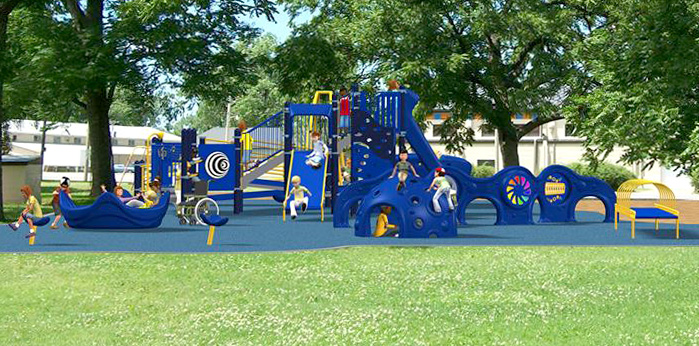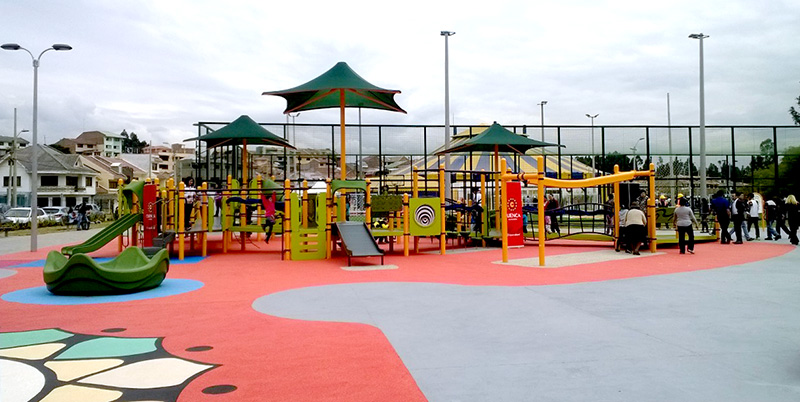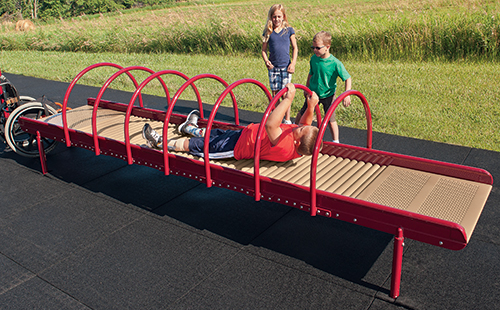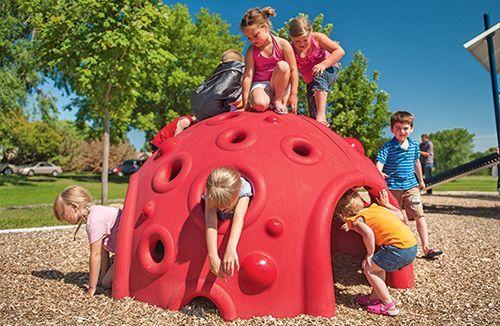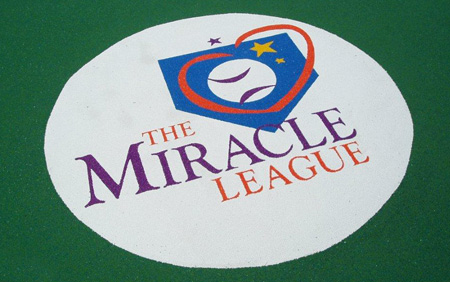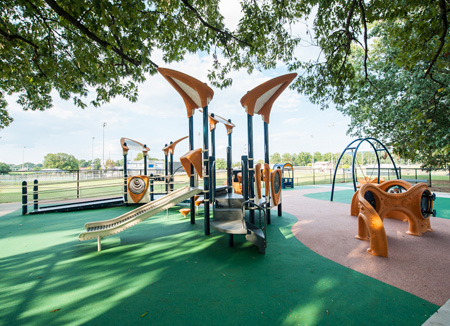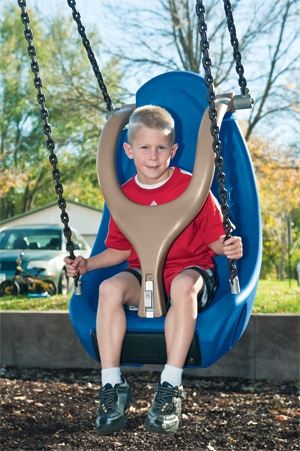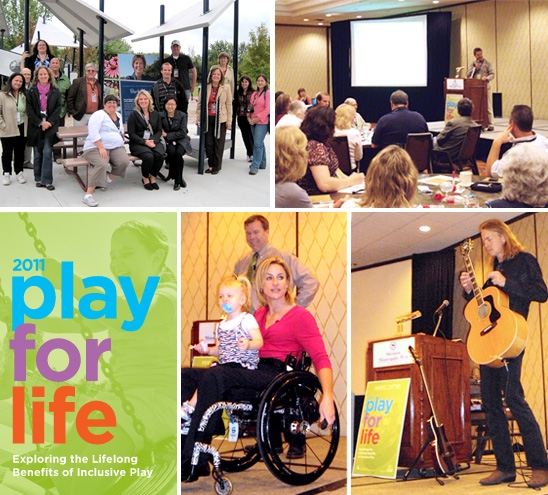In June, we awarded the Iola Kiwanis club in Iola, Kan., $25,000 in playground equipment as part of the Make a Difference Through Play contest. We’re happy to share another update from Michael Ford, member of Iola Kiwanis and community resource officer for the Iola Police Department.
The M.O.M.S. group has been a great help in planning the inclusive playground. They’re excited about the playground, but even more excited for the opportunity to educate the community about their children with special needs. During a recent fundraiser, each of the moms brought something to display about their child. Then in the presentation, they talked about how the inclusive playground would benefit their child with special needs in addition to their typically developing children.
Iola is a town of 5,600 people in a county of 14,000. And out of the three surrounding counties, we’re the only one with a Wal-Mart. People from the tri-county area visit Iola for many reasons—a shopping trip, our parks, swimming competitions. And soon, our new inclusive playground. The nearest inclusive playgrounds are in Wichita, Kansas City and Joplin, all of which are about a two-hour drive away. So when parents hear about our inclusive playground, I definitely think they’ll visit Iola to give their kids a chance to play.
I don’t want to say “If you build it, they’ll come,” but I think that’s the case. With the way the design is, every kid can play on this playground. I think people will be coming here; Iola will become a stop for many families.
Michael, the Iola Kiwanis club and the entire community of Iola have been busy fundraising for the inclusive playground since winning the Make a Difference through Play contest. And congratulations to the entire team are in order. As of earlier this month, Iola Kiwanis secured two additional grants—one from the Kansas Health Foundation and another from KaBOOM!—for the playground to bring them within about $15,000 of their fundraising goal!
Stay tuned for another update from Michael next month. He’ll talk more about the benefits of the partnership between Kiwanis International and Landscape Structures.


